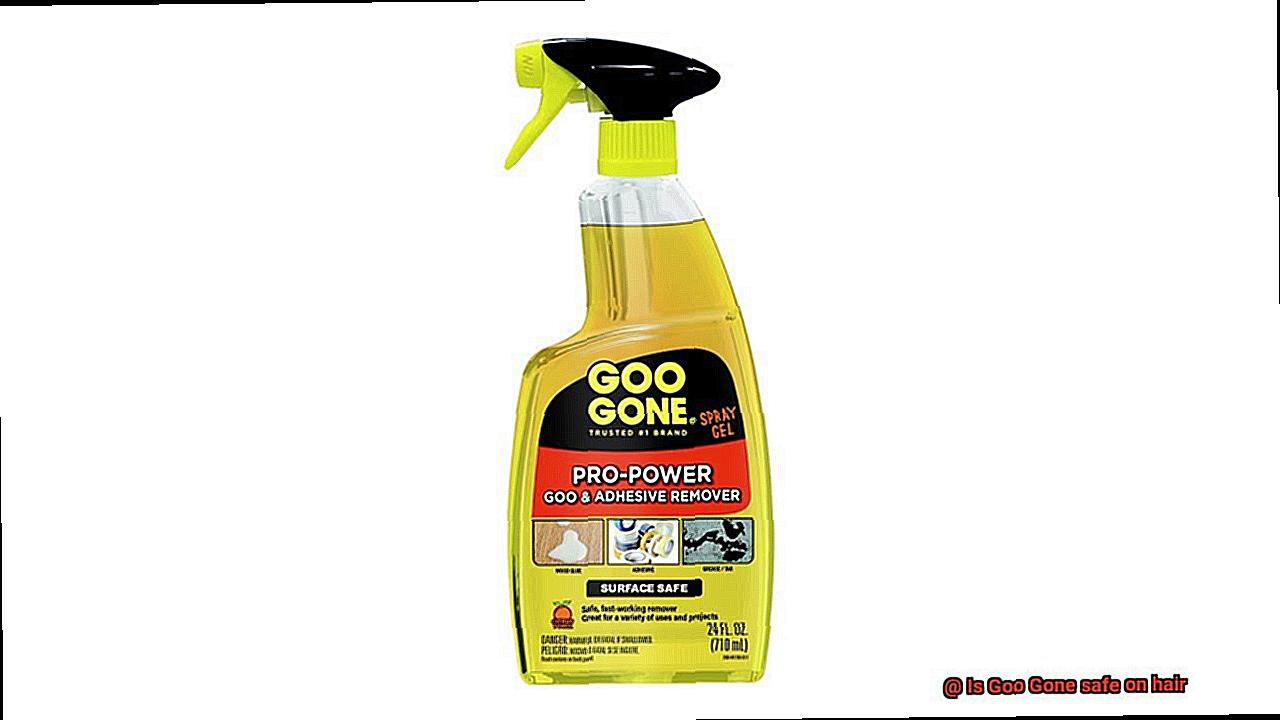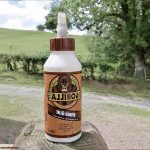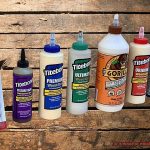Have you ever found yourself in a sticky situation where your hair is covered in residue that just won’t budge? Maybe it’s from a DIY project gone wrong or an unfortunate spill. Whatever the cause, you might have heard about Goo Gone as a possible solution. But before you go pouring this solvent on your locks, the question remains: is Goo Gone safe on hair?
Goo Gone has been a go-to adhesive remover for decades, renowned for its ability to tackle stubborn substances on various surfaces like fabrics, carpets, and even cars. However, when it comes to using it on hair, things get a bit murky. While some people swear by its effectiveness, others warn of potential dangers lurking beneath the surface.
In this blog post, we’ll dive headfirst into whether Goo Gone is safe to use on hair. We’ll explore the ingredients that make up this solvent and how they interact with delicate strands. Plus, we’ll provide tips on how to safely use Goo Gone if it’s deemed suitable for hair. So whether you’re a beauty enthusiast or just looking for an unconventional solution to your sticky hair woes – keep reading to find out if Goo Gone is the answer you’ve been searching for.
What is Goo Gone?
Contents
When it comes to removing tough stains and adhesive residue, Goo Gone is a household name that has been trusted by millions of people worldwide for over half a century. It is a liquid formula that packs a powerful punch, thanks to its blend of chemicals such as petroleum distillates, citrus oils, and surfactants.

Goo Gone is a versatile cleaning product that can be used on various surfaces such as metal, plastic, glass, and wood. It can effectively remove adhesive residue that is left behind after removing stickers, labels, or tape. Additionally, it can tackle stubborn grease, oil, tar, and gum stains.
However, Goo Gone’s effectiveness also comes with a warning: it is not safe to use on hair or skin. The product’s harsh chemicals can cause serious damage if they come into direct contact with the scalp or skin. Contact with hair can lead to dryness, brittleness, hair loss, and irritation of the scalp. On the skin, it can cause itching, redness, and chemical burns.
To ensure the safety of users, the manufacturer recommends avoiding using Goo Gone on hair or skin. In case of accidental exposure to these areas, rinse thoroughly with warm water and seek medical attention if any adverse reactions occur.
Is Goo Gone Safe on Hair?
Before reaching for Goo Gone, it’s important to understand why this popular adhesive remover is not recommended for hair use. As an expert on this topic, I’m here to provide you with all the information you need to know.
The main ingredient in Goo Gone is a citrus-based solvent that’s highly effective at dissolving adhesives. However, this powerful solvent can do more harm than good when it comes to your hair. Citrus-based solvents can strip away your hair’s natural oils, leaving it dry, brittle, and prone to breakage. In addition, Goo Gone also contains petroleum-based solvents that can clog pores on the scalp and lead to irritation or even infection.
Using Goo Gone on hair can also be dangerous as it may cause skin irritation or chemical burns if it comes into contact with the scalp. It’s important to remember that Goo Gone is not intended for use on skin or hair, and its use in these areas is not recommended.
If you accidentally get Goo Gone on your hair, don’t panic. The best course of action is to rinse your hair thoroughly with warm water and mild shampoo to remove any residue. Avoid using hot water or harsh shampoos as they can further damage your hair. If you experience any itching, burning, or redness on your scalp or skin after using Goo Gone, seek medical attention immediately.
To avoid damaging your hair and scalp altogether, it’s best to use products that are specifically designed for removing adhesive residue from hair. Consider using natural oils like coconut or olive oil, which can effectively break down adhesive without causing harm to your tresses.
Why is Goo Gone Not Safe on Hair?
While Goo Gone may seem like a quick fix, it’s important to understand why it’s not safe for use on hair.
The chemical composition of Goo Gone is the primary reason why it’s not safe on hair. This powerful solvent contains petroleum-based ingredients that are designed to dissolve tough adhesives on surfaces such as metal, plastic, and wood. However, these same chemicals can be extremely harsh and damaging to human hair.
One major issue with using Goo Gone on hair is that it strips away the hair’s natural oils, leaving it dry, brittle, and damaged. This can lead to split ends, breakage, and even hair loss in severe cases. Additionally, the harsh chemicals in Goo Gone can irritate the scalp and cause redness, itching, and inflammation.

Another concern with using Goo Gone on hair is the potential for the chemicals to be absorbed through the scalp and into the bloodstream. This can lead to health problems like headaches, dizziness, nausea, and respiratory issues.
Fortunately, there are safe and gentle alternatives for removing adhesive residue from hair. Natural oils like coconut or olive oil can effectively dissolve adhesive while nourishing your hair at the same time. Clarifying shampoos or baking soda mixed with water are also great options for gently removing stubborn residue.
Potential Damage Caused by Goo Gone on Hair
Before reaching for that bottle of Goo Gone, consider the potential damage it can cause to your precious mane. This powerful solvent is designed to remove sticky substances from surfaces, not hair.
The primary concern with using Goo Gone on hair is the risk of chemical burns. This solvent contains a mixture of chemicals, including petroleum distillates and citrus oils. When applied directly to the skin, these chemicals can cause irritation, redness, and even chemical burns. If Goo Gone comes into contact with your scalp or skin around your hairline, it can be harmful.
In addition to the risk of chemical burns, Goo Gone can damage your hair itself. The chemicals in Goo Gone can strip the natural oils from your strands, leaving them dry and brittle. This can cause breakage and split ends, making your hair appear damaged and unhealthy.
Moreover, if you have colored or treated hair, using Goo Gone can strip away any color or treatments you’ve had done. This can leave your hair looking dull and lifeless, further damaging your locks.
Instead of using Goo Gone, opt for safer alternatives such as natural oils or clarifying shampoos to effectively remove residue without sacrificing your hair’s health. And if you’re dealing with a stubborn case of adhesive residue, it’s best to consult a professional stylist for safe and effective removal methods.
How to Remove Goo Gone from Hair
Removing Goo Gone from hair can be a tricky task, as the product contains harsh chemicals that can cause damage and irritation. However, with these five simple steps, you can safely and effectively remove Goo Gone from your hair.
Step 1: Remove Excess Product
The first step is to remove as much of the Goo Gone as possible using a paper towel or cotton swab. Avoid using water, which can spread the product further and make it harder to remove.
Step 2: Rinse with Cool Water
Next, rinse the affected area with cool water to remove any remaining Goo Gone from the hair and scalp. Avoid using hot water, as this can cause the product to spread and become more difficult to remove.
Step 3: Apply Shampoo
Apply a small amount of clarifying shampoo directly to the affected area and gently massage it into the hair and scalp. Rinse with cool water and repeat as needed until all of the Goo Gone has been removed. Clarifying shampoos are designed to remove build-up and can effectively remove any remaining Goo Gone from your hair.
Step 4: Try Natural Methods
If there are still traces of Goo Gone left in the hair, try using a natural method such as a mixture of baking soda and water. Apply the mixture directly to the affected area and massage it into the hair and scalp. Rinse with cool water and repeat as needed until all of the Goo Gone has been removed.
Step 5: Apply Soothing Treatment
If the Goo Gone has caused any irritation or discomfort to your scalp, apply a soothing scalp treatment or oil to help alleviate any symptoms.
Prevention is key when it comes to avoiding Goo Gone coming into contact with your hair. Always wear gloves when handling the product and avoid using it near your head or face. If you do accidentally get Goo Gone on your hair, follow these steps to safely remove it and minimize any potential damage.
When to Seek Medical Attention
We’ve all been there – struggling to remove a pesky sticker from our hair, only to reach for a bottle of Goo Gone as a quick solution. But what happens when something goes wrong? When should you seek medical attention?
First and foremost, if you accidentally get Goo Gone on your hair, act fast and wash it out immediately with soap and water. However, if you start to experience any discomfort or irritation such as itching, redness, or burning, it’s vital that you seek medical attention right away.
Using Goo Gone on your hair can lead to severe damage. It has the potential to cause chemical burns, hair loss, and even trigger allergic reactions. If you detect any of these symptoms, do not attempt to treat them yourself. Instead, seek medical attention immediately.
It’s also important to note that ingesting Goo Gone or inhaling its fumes can cause serious health problems. If either of these scenarios occurs, go straight to the nearest medical professional.
In summary, when it comes to your health and well-being, it’s always better to err on the side of caution. If you’ve used Goo Gone on your hair and are experiencing any discomfort or irritation, don’t hesitate to seek medical attention. Trust us – your hair will thank you for it.
Alternatives for Removing Adhesives from Hair
If you’ve ever found yourself in a sticky situation with adhesive stuck in your hair after a DIY project or a fun day of crafting, you know how frustrating and damaging it can be to your locks. While Goo Gone may seem like the quickest solution, it’s important to consider the potential harm it could cause to your hair and scalp. Fortunately, there are several safer and more natural alternatives for removing adhesives from hair that are just as effective.
First on the list is coconut oil – a versatile oil with natural adhesive-breaking properties that won’t damage your hair or scalp. Simply massage the coconut oil into your hair and let it sit for a few minutes before gently combing out the adhesive. Voila. Your hair will be free of any sticky residue.
Another alternative is olive oil, which also has natural adhesive-breaking properties that are gentle on your hair and skin. Just apply the olive oil to the affected area and let it sit for a few minutes before combing out the adhesive.
If you’re looking for a more commercial solution, there are several adhesive removers specifically designed for use on hair that contain gentler ingredients than Goo Gone. Look for options that contain natural oils or plant-based ingredients for the safest results.
Prevention is key when it comes to avoiding adhesive in your hair in the first place. Always wear gloves when handling sticky substances and use protective caps or headbands as necessary to keep your locks safe.
6RCJnKZyr9U” >
Conclusion
In conclusion, while Goo Gone has been a trusted adhesive remover for over 50 years, it is not safe to use on hair. The powerful chemicals in the product can cause serious damage to your scalp and skin if not used with caution. Hair contact can lead to dryness, brittleness, hair loss, and scalp irritation. On the skin, it can cause itching, redness, and chemical burns.
To avoid damaging your tresses, it’s best to steer clear of Goo Gone when removing residue from your hair. Instead, consider using natural oils or clarifying shampoos that are gentler on your locks.
If you do accidentally get Goo Gone on your hair or skin, act quickly by washing it out with soap and water. If you experience any discomfort or irritation after using the product on your hair or skin, seek medical attention immediately.
Prevention is always better than cure when it comes to avoiding adhesive mishaps in your hair. Always wear gloves when handling sticky substances and use protective caps or headbands as necessary to keep your locks safe.






